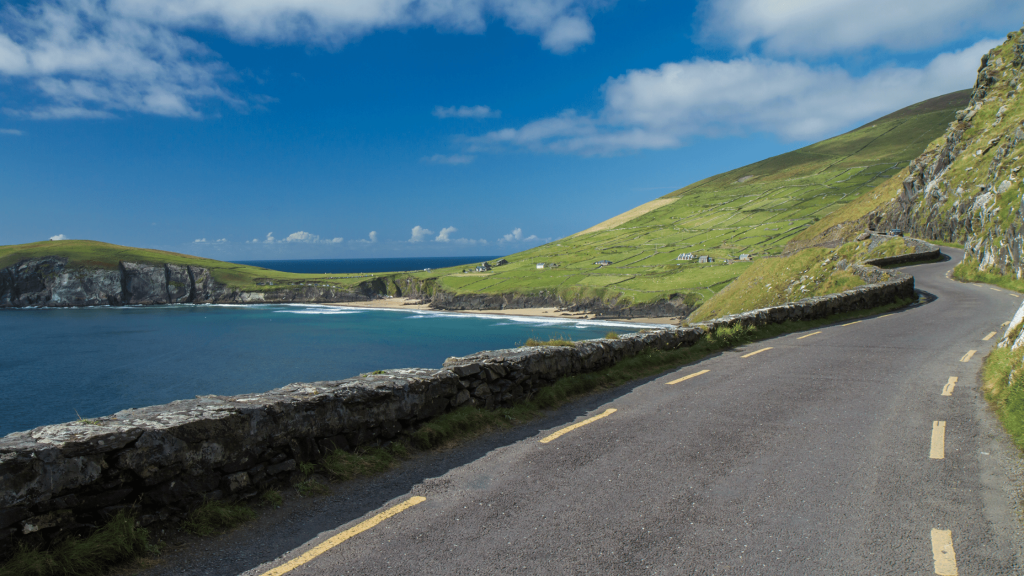Gearing up for a road trip to Ireland? Follow this guide to prepare for everything you need to know about the driving differences between Northern Ireland and the Republic of Ireland.
Speed limits
In the Republic of Ireland, the speed limits are 50 kph (30 mph) in urban areas; 80kph (50 mph) on single open roads; 100kph (60 mph) on national roads (marked by a green sign); and 120 kph (74.5 mph) on motorways.
In Northern Ireland, the speed limits are 45 kph (30 mph) in urban areas; 95 kph (60 mph) on single carriageways; 110 kph (70 mph) on dual carriageways.
Road signs
Direction signs in the Republic are in blue for major routes (motorways), green for national roads, and white for local roads.
Places of interest are signposted by brown in the Republic and black in Northern Ireland, both with white lettering. In Ireland, all place names will be listed in both Irish and English, and the distances are given in both kilometres and miles. In Northern Ireland, all signs are in English and use miles to communicate distances.
Drinking and driving
Drinking and driving are taken very seriously in Ireland and few people will risk getting behind the wheel even after one drink. The legal limit to drive in Ireland is 0.5 milligrams of alcohol per millilitre of blood – which is lower than the 0.8 legal limits in many other countries.
Toll roads
Northern Ireland has no toll roads, but they do exist in the Republic of Ireland. Toll roads cut travel time significantly when compared to country roads. You will stop at toll booths to pay when entering toll roads in Ireland, with the important exception of the M50 around Dublin, which uses the eFlow Barrier System. This is the system used when travelling from the North to Dublin Airport, there are no physical toll booths. Your car’s license plate will be photographed, and you must remember to pay the toll online or at a designated kiosk before 8 p.m. the next day.
L-plates, N-plates, or R-plates
You will see cars marked with special plates displayed on the front and rear windows of the vehicle. These coloured letters mean that there is a new driver behind the steering wheel.
In Northern Ireland Learner plates (L-Plates) must be displayed when the driver is learning to drive with an instructor or insured driver, having not passed their driving test yet. Restricted driver plates (R-Plates) are displayed once the drivers’ test has been passed and must remain in place for one year.
In Ireland, you must display novice plates (N-Plates) on your vehicle for two years after receiving your first full driving licence.
Other Rules to Note
- Seatbelts are compulsory for all drivers and passengers in the vehicle.
- It is illegal to use a hand-held mobile phone while driving. You must also have proper control while using hands-free.
- All drivers must have valid insurance.
Related Blogs:
What are the consequences of driving without an MOT or insurance?

